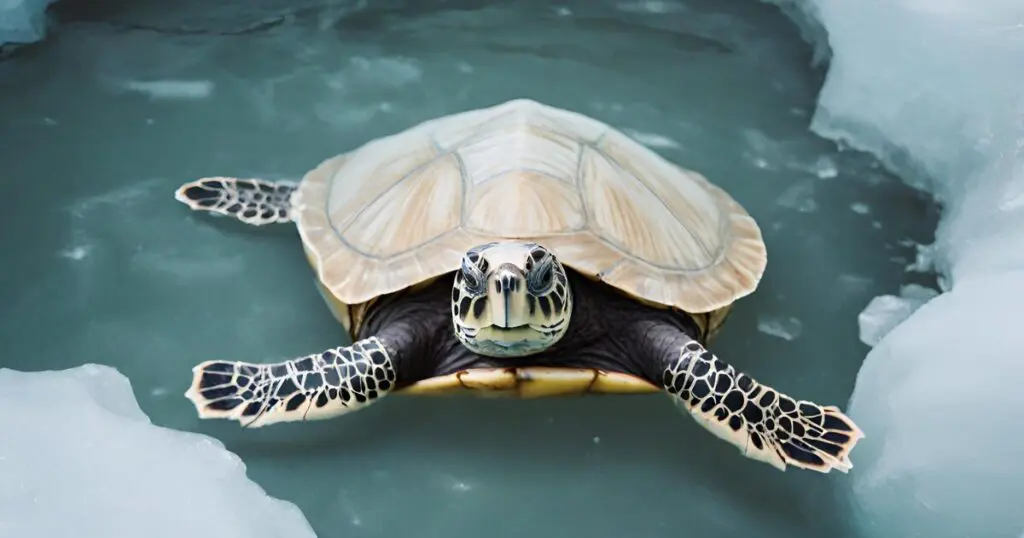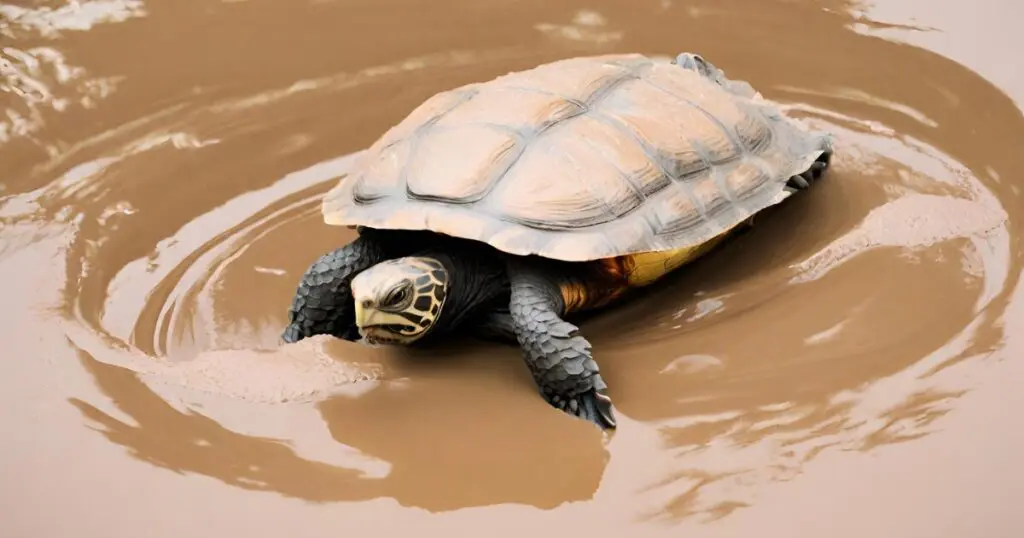You may have noticed that many animals, including turtles, are not seen during the winter. They may hang around in your yard or lakeside during the warmer seasons. But as soon as winter comes, they are all gone! Where do turtles go for the winter?
Depending on the nature of the turtle, some may brumate, and others may not brumate. Brumation is similar to hibernation with some differences. Turtles can survive extremely cold temperatures. However, they become less active to save energy as food becomes scarce during the cold seasons.
As a reptile enthusiast, I find this habit of turtles quite fascinating. Let me explain to you what turtles do in winter.
Where Do Turtles Go For The Winter?

You don’t get to see turtles during the winter as they mostly hide themselves during this time. As they are reptile, they are cold-blooded. It means they rely on the external temperature to maintain body heat. Winter makes it difficult for them to regulate their body temperature, therefore, they hide.
Land turtles burrow underground or under logs and litter. They also slow their metabolism to save energy. But what about the aquatic turtles?
Freshwater turtles bury themselves in the mud at the bottom of ponds, lake, or rivers as there the water stays less cold. Some of them can absorb oxygen through their skin to survive under ice.
For sea turtles, they migrate to warmer waters. For this, they often follow ocean currents. This helps them find better food sources and avoid freezing temperatures.
How Do Turtles Survive the Winter?
Turtles are ectotherms, which means that these reptiles cannot regulate their body temperature. This is a vital feature of their lives. It makes them vulnerable to their surroundings. Their body temperature changes along with the environmental temperature.
The survival techniques for territorial and aquatic turtles differ slightly. Territorial turtles mostly go on brumation to save energy. Aquatic turtles can brumate or migrate. Sea turtles have the ability to cross long distances so they go for migration.
Turtles can survive under extremely cold weather. Species like painted turtles can survive in temperatures when it is as low as 32 degrees Fahrenheit.
How Does Brumation Help Turtles Survive?
Turtles do not hibernate. Instead, they go on brumation. These two are not similar techniques. People often misunderstand the nature of turtles and mix it with hibernation.
Turtles become less active during brumation. They spend very little energy and they can go an extended period without eating. As temperature drops, turtles slow down their metabolic processes to conserve energy.
Land-dwelling turtles brumate by burrowing into the ground. They find a suitable spot and dig a burrow to shield themselves. The same can be seen among aquatic turtles, too. They may bury themselves in the mud at the bottom of ponds, lakes, or slow-moving rivers.
When turtles are submerged, they avoid freezing temperatures and reduce metabolic activity. It helps them survive in the extreme cold weather.
Where Do Migrating Turtles Go in the Winter?
Terrestrial or freshwater turtles usually do not migrate. Sea turtles are mostly known as the migrating turtles. They can travel thousands of miles to migrate to warmer waters.
For instance, loggerhead and green sea turtles migrate to tropical or subtropical regions. Leatherback sea turtles, in contrast, venture into deeper, warmer waters. These migrations help them avoid the adverse effects of cold temperatures.
Once in these warmer locales, they may continue feeding and engaging in normal activities. The precise destinations vary by species. The common feature involves choosing an area where the temperature is more suitable and food is easily available.
What to Do If You Find Brumating Turtles?
You must not cause any disturbance to brumation turtles. Don’t know when they are brumating? You can easily identify them by them being hindering their shells. You will notice no movements and their heads are usually not seen for terrestrial turtles.
If you think there is any danger for the turtle, then you can move them to a safe place. They usually dig a hole and hide there. Usually, you won’t notice them hibernating. If you still do, do not disturb them. You can watch this video to see what brumating turtles look like:
What is the difference between brumation and hibernation?
Since I am mentioning brumation frequently, you may be wondering what are the differences between brumation and hibernation. Check the following table for clearance:
| Criteria | Hibernation | Brumation |
| Purpose | Surviving extreme cold by conserving energy | Coping with cold or dry periods, slowing down metabolism |
| Temperature | Usually in response to cold temperatures | Can occur in response to cold or drought |
| Metabolism | Slows down significantly | Slows down, but not as dramatically as hibernation |
| Activities | Limited, minimal movement | Reduced activity, may involve periodic waking |
| Duration | Prolonged, often throughout winter | Can be seasonal, varying in duration based on environmental conditions |
| Location | Sheltered areas, burrows, or dens | Burrows, nests, or suitable hiding spots depending on species |
| Common in Species | Mammals (bears, hedgehogs) | Reptiles (turtles, snakes) and some amphibians |
| Breathing | Slowed but continues | Slowed, and some reptiles may not breathe at all for short periods |
| Examples | Bears hibernating in dens | Turtles brumating in mud or leaf litter |
FAQ
Have a look at the following questions to get more information about turtles’ survival in winter.

Do turtles eat in the winter?
No, turtles do not eat in the winter, especially when they are in brumation. Their metabolism slows down, and they rely on stored energy reserves. It is a common phenomenon in ectothermic animals like turtles.
Can turtles freeze and stay alive?
Yes, some species of turtles can tolerate freezing conditions to a certain extent. They enter a state of supercooling and allow their body fluids to freeze without causing cellular damage. They have their limitations, though. Prolonged exposure to extreme cold can be harmful to them.
Do turtles get brain freeze?
No, turtles do not experience brain freeze in the same way we humans do. They are cold-blooded and their metabolic processes slow down in colder weather. It reduces the risk of brain freeze sensations. Brain freeze caused by cold substances is not a concern for turtles in their natural behavior.
Do pet turtles need brumation?
Yes, pet turtles need brumation depending on their species. Some owners choose to provide a period of cooling to mimic their natural cycles. You can help them dig and brumate. Some owners, however, maintain a consistently warm environment for their reptile friends to keep them away from brumation or hibernation.
Do turtles like hot or cold weather?
Turtles prefer warmer temperatures generally. The ideal temperature for them can vary depending on their species. It is crucial for their health to provide an environment that allows them to regulate their body temperature effectively.
Conclusion
Turtles are interesting reptile animals. Their behaviors are highly influenced by their environment and weather. You will notice many changes with the fall of temperatures. This is one of the reasons you do not see them so often in winter.
As soon as the temperature rises, turtles return to their normal life. You will begin to see more of them. You do not need to worry if suddenly the turtles of your neighborhood vanish in winter. They will return after the end of the cold days. Till then, read more about turtles on our website.
